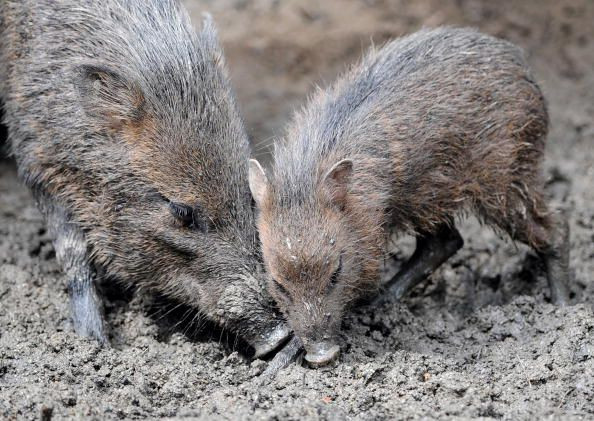Prehistoric Pig-Like Creatures' Fossils Found By Tennessee Scientists In Shocking Discovery [PHOTOS]

Prehistoric fossils of two different species of ancient pig-like creatures called peccaries were recently unearthed.
Scientists with East Tennessee State University (ETSU) recently confirmed that they made the thrilling discovery in an area known as the Gray Fossil Site. The fossils found include a part of a well-preserved skull and were discovered to belong to two different species of peccaries, Prosthennops serus and Mylohyus elmorei.
Scientists were able to determine that the remains belong to the two species due to the “well-preserved remains of their skulls,” including the “nearly complete lower jaws" of Prosthennops serus and Mylohyus elmorei.
See posts, photos and more on Facebook.
According to the university's press release, the discovery seems to support the theory that these two species roamed the Gray Fossil Site area in prehistoric times. This is also the first time that remnants of either species have been discovered in the Appalachian region.
The university explained that remains of the Prosthennops serus had previously been discovered in other U.S. fossil sites, but never in the Appalachian region. The other peccaries species, Mylohyus elmorei, has only been discovered in a region in central Florida that is over 900 kilometer south of the Gray Fossil Site.
Chris Widga, the head curator at the ETSU Museum of Natural History at the Gray Fossil Site, explained that the two peccaries species once roamed there because the area was once a large pond surrounded by an abundant forest.
“Details of the peccaries’ teeth suggest they spent their lives browsing on the leaves and fruits of succulent plants, so they would have been right at home in the Gray Fossil Site ecosystem, which we know from plant fossils was rich with tasty vegetation,” Widga said in a statement.
According to scientists, the Prosthennops serus and the Mylohyus elmorei were estimated to be the size of German shepherds, which is bigger than modern-day peccaries. And peccaries, though they may resemble pigs, are not actually members of the pig family.
“True pigs, members of the family Suidae, are native to Europe, Asia and Africa, while peccaries belong to the family Tayassuidae and live in the Americas,” ETSU explained.
ETSU further revealed that the Gray Fossil site contains fossil-rich clays and has “an ancient ecosystem that dates back around 5 million years." Aside from the peccaries, it was also home to ancient tapirs, rhinos, alligators, mastodons and more during the prehistoric era.
© Copyright IBTimes 2024. All rights reserved.





















